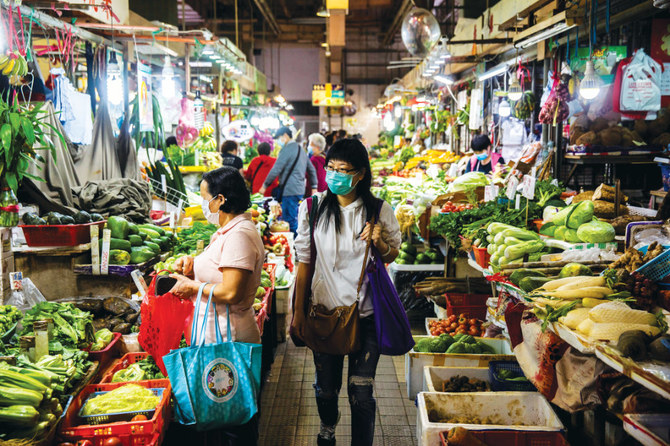ROME: World food prices rose for a third month running in August, led by coarse grains, vegetable oils and sugar, the UN food agency said on Thursday.
The Food and Agriculture Organization’s food price index, which measures monthly changes for a basket of cereals, oilseeds, dairy products, meat and sugar, averaged 96.1 points last month versus 94.3 in July.
The Rome-based FAO also said in a statement that worldwide cereal harvests remained on course to hit an annual record in 2020.
The agency’s cereal price index rose 1.9 percent in August from the month before and 7 percent above its value a year earlier.
Among the major cereals, sorghum, barley and rice prices rose the most, FAO said.
Maize also climbed strongly, pushed up by concerns over US production prospects following recent crop damage in Iowa.
The vegetable oil price index climbed 5.9 percent month-on-month, returning to around the levels registered when the coronavirus crisis hit the world at the start of the year.
Palm oil was buoyed by expected output slowdowns in major producing countries, which, combined with firm global import demand, were expected to result in lower inventory levels.
Average sugar prices rose 6.7 percent from July, reflecting forecasts of a reduction in production due to unfavorable weather conditions in the EU and Thailand. Strong import demand in China also helped to push prices higher.
By contrast, the dairy index was little changed on the month, with falls in cheese and whole milk powder offset by stronger butter and skim milk quotations.
The meat index was also largely steady, with bovine and poultry prices in retreat while pig meat prices rose after four consecutive months of declines, as Chinese imports jumped.
FAO revised down its forecast for the 2020 cereal season by 25 million tons, largely due to expectations of a lower maize production in the US.
However, despite this reduction, the agency still expected a record harvest this year of almost 2.765 billion tons, up 3 percent on 2019 levels.
“Record maize harvests are forecast for Argentina and Brazil, while global sorghum production is expected to grow by 6 percent from the previous year. Worldwide rice production in 2020 is also expected to reach a new record of 509 million tons,” FAO said.
The forecast for world cereal use in 2020/21 hit 2.746 billion tons, up 2 percent on the 2019/20 level. The estimate for world cereal stocks by the close of seasons in 2021 was 895.5 million tons, down 33.4 million tons since July.
Reuters






















